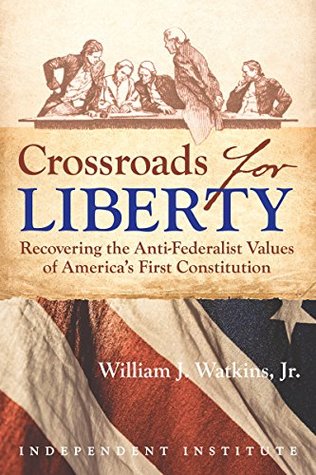According to pious American folklore, there was in 1787 a “Miracle at Philadelphia” in which demigod Founding Fathers gathered and gave the world the “U.S. Constitution”; thereby, as chanted by former Chief Justice Burger in a juvenile bicentennial panegyric, they changed human history forever—and got rid of the awful Articles of Confederation, which stood in the way of a preordained march into American greatness.
In fact, what came from Philadelphia was not a “U.S. Constitution” or a “Constitution of the U.S.” It was “a Constitution for the United States.” It was no more than a draft proposal that had no force whatsoever until it was ratified by the people of each state acting as free sovereigns, with no power to bind the free sovereign people of any other state. The proposal created a great deal of learned discussion, pro and con. It succeeded eventually, but it by no means swept the field and triumphed amidst hosannas of glorious anticipation of changing the world. The margin for ratification in several states was small, and two at first refused to approve at all. It would not have passed had not its opponents promised an early correction and clarification of some of its challenged provisions and confidently pacified the warnings of potential dangers.
Chronicles contributor William J. Watkins, in his fourth book on the Constitution, gives us a look at what was really going on in constitutional thought in 1787-89 by bringing to light seven of the most prominent Antifederalist opponents of the Philadelphia plan of government. It is obvious that everything they predicted about the Constitution dooming Americans to an unbounded centralized power has come to pass, in spades. The Antifederalists were statesmen and patriots, motivated by the desire to protect recently won liberty.
The misnamed Federalist proponents of the Constitution were more interested in establishing a power that could control the sometimes recalcitrant common folks and create good business conditions—i.e., a government that could make them some money by what would later be called crony capitalism. They assured the people that their fears of “consolidation” under the new Constitution were unfounded. Alexander Hamilton, an on-the-make immigrant bastard with a Napoleon complex, did this from calculated deceit; James Madison did it from confusion.
Curiously, our scholars celebrate the political wisdom of the Federalist essays by Hamilton, Madison, and John Jay as if they were sacred texts and definitive explications of the Constitution. But the Federalist was never ratified by anybody. It has no real constitutional standing at all. Furthermore, everything Madison argued about the nature and tendencies of government has proved wrong, and Hamilton’s actions in power immediately repudiated all the comforting assurances he gave the voters while he was promoting acceptance.
In Federalist 33 Hamilton wrote that the Necessary and Proper clause was merely tautological and harmless. It could not confer powers on Congress that were not expressly delegated. In office, Hamilton cited Necessary and Proper as authorization for undelegated federal actions—for instance, incorporating a “national bank” (actually a private banking cartel), although the Framers of the Constitution had specifically refused to give the new government the power to make corporations. Madison was surprised when the national-bank business came up.
Antifederalist Richard Henry Lee declared that the General Welfare clause in the Preamble would be used to pass laws dealing “with every possible object of human legislation.” During the ratification process Hamilton called such fear “an absurdity.” In office, he declared that “general welfare . . . embraces a vast variety of particulars, which are susceptible neither of specification or definition.”
The Antifederalist “Brutus” warned that federal judges “would be independent of the people, of the legislature, and of every power under heaven. Men placed in this situation will generally soon feel themselves independent of heaven itself.” Nonsense, said Hamilton. The Supreme Court would be the weakest part of the government, unable to do anything against the other branches. In power, he and his friends did all they could to organize the federal judiciary into an authority superior to the people, Congress, and the states.
The ratifying states’ demands for early revisions of the proposed instrument of government were numerous and forceful. The amendments that make up the Bill of Rights were a result, and that was a good thing in its way. But as for providing real structural restraint on the federal government, they were, as one Antifederalist pointed out, “little better than whip-syllabub, frothy and full of wind,” serving chiefly as a deceptive diversion for doubters. And not long after, the great Federalist Chief Justice John Marshall exhibited his foresight and wisdom by declaring that it was impossible that the Bill of Rights could ever be used against the states.
Watkins has succeeded admirably in amending conventional wisdom about the ratification period and cataloging how the prophecies of the Antifederalists about abuses and usurpations of power have been revealed as true right up to the present day. If we truly want to reform the runaway government, he writes, “we would do well to dust off the Articles of Confederation, the Anti-Federalists’ writings, and the amendments proposed by the state ratifying conventions.” Too true, but how do we get the attention of those who most need the lessons—federal judges and Ivy League law-school professors?
[Crossroads for Liberty: Recovering the Anti-Federalist Values of America’s First Constitution, by William J. Watkins, Jr. (Oakland, CA: Independent Institute) 313 pp., $32.95]

Leave a Reply